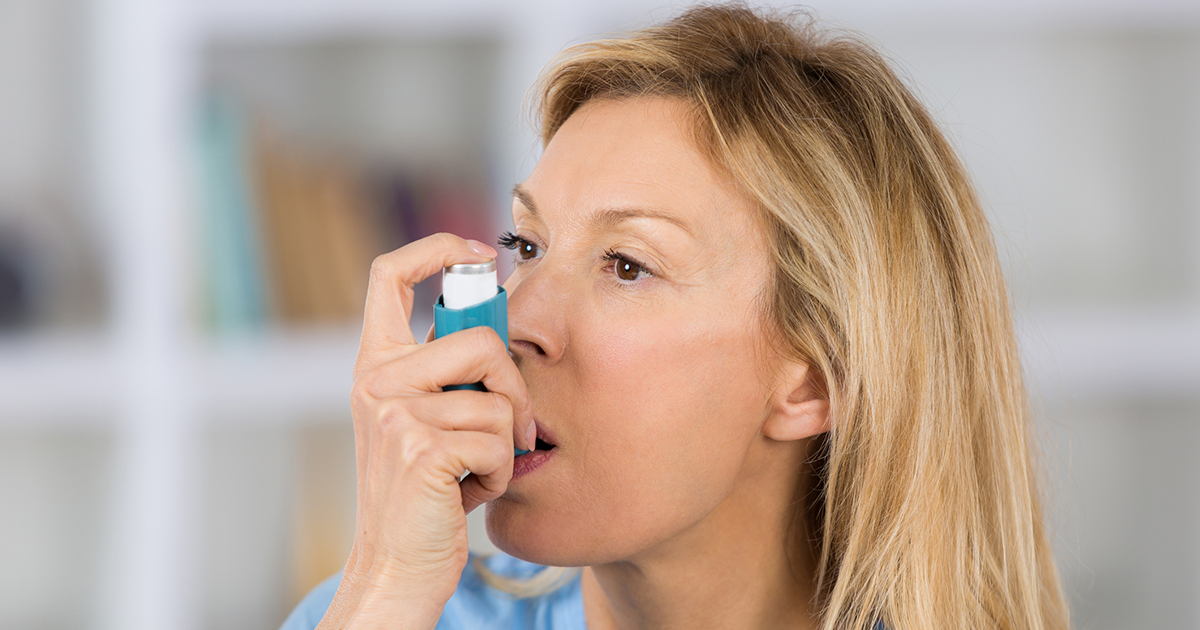Common Treatments To Reduce Lung Hyperinflation
Lung hyperinflation is a condition that occurs when air becomes trapped in the lungs, leading to overinflation. The condition might be caused by less elastic air sacs or air passage blockages, as both of these interfere with air expulsion from the lungs. Lung hyperinflation is commonly seen in those with chronic obstructive pulmonary disease because of the emphysema symptoms. Other lung problems, like cystic fibrosis and asthma, can lead to the development of lung hyperinflation. While an x-ray is usually used to diagnose the condition, x-ray imaging sometimes shows lung hyperinflation even when none is present. Doctors may use a CT scan to confirm the diagnosis. Treatments vary depending on the severity and the underlying cause.
Oxygen Therapy

Oxygen therapy may be used to help with breathing and management of the condition, especially if the underlying cause is chronic obstructive pulmonary disease (COPD). Patients with COPD sometimes have a low exercise tolerance because of the decreased amount of oxygen being carried to their muscles. Using supplemental oxygen helps increase the amount of oxygen entering the lungs, allowing them to exercise more easily. In fact, supplemental oxygen has been shown to increase the lives of COPD patients.
Lung hyperinflation leads to breathlessness and a reduction in exercise tolerance because part of the lungs isn't receiving fresh air. There have been a few studies specifically examining the effects of supplemental oxygen on hyperinflated lungs. When combined with exercise, patients using oxygen therapy had a larger decrease in hyperinflation than patients who exercised without oxygen.
Lung Volume Reduction Surgery

Lung volume reduction surgery is a surgery used to removed emphysematous and diseased lung tissue. When lung hyperinflation is caused by disease, surgery to remove the tissue may be an option. It's typically recommended for patients who have severe emphysema and one lung more noticeably affected by hyperinflation than the other. When the diseased lung is inflated, it takes up too much room in the chest cavity and presses on the second, functioning lung, decreasing its ability to expand. During lung volume reduction surgery, the diseased and inflated tissue is removed, creating room for the healthier lung to function properly.
There are four identified groups of individuals who may be eligible for this type of surgery. The first group includes those with low exercise capacities and emphysema mostly concentrated in the upper lobe. The second group eligible also has upper lobe emphysema, but their exercise capacity is high. The third group involves diffuse emphysema and low exercise tolerance, while the fourth includes diffuse emphysema and high exercise tolerance.
Bronchodilators

Bronchodilators are a type of medication that relax the muscle bands surrounding the airways. When these bands tighten, they can lead to restricted breathing, and if they obstruct an airway entirely, they may be the cause of lung hyperinflation. A bronchodilator medication opens a patient's airway to allow the easier flow of air to and from the lungs. In addition, the medication helps dislodge and move mucus out of the patient's lungs, where it can be coughed up.
The majority of individuals with asthma are prescribed bronchodilators. Short-acting forms of the medicine are used during acute attacks for fast relief, while long-acting medicines may be taken each day to prevent asthma attacks. A bronchodilator is a treatment option for lung hyperinflation only if the underlying cause is airway obstruction due to muscle band tightening.
Pursed-Lip Breathing

One of the first recommended treatments for lung hyperinflation is breathing strategies like pursed-lip breathing. This is an ideal option for most individuals experiencing lung hyperinflation because it can be done immediately, it's non-invasive, and it doesn't involve medications with potential side effects. If breathing exercises aren't enough to relieve the symptoms, doctors may recommend other forms of treatment. The first thing for patients to do during this method of treatment is to slow their breathing and make it as deep as they can.
Once they've gotten comfortable doing that, patients should hold their breath for short periods. If they're having trouble doing so, even an interval as short as one second can improve respiratory function. After holding, patients should make a pursed 'O' with their mouth and slowly breathe the air out. It helps to use counting rhythms. As the patient's lung function improves, they can increase the amount of time they inhale and exhale.
Exercise Training

Exercise training is an incredibly important treatment method for individuals with lung hyperinflation who can tolerate exercise. Even if an individual is not able to exercise at the typical level of an adult with uncompromised lungs, small and mild exercises are better than no exercise at all. Just a little exercise increases lung capacity and strengthens the cardiovascular system. Doctors will usually recommend exercise training for patients whose lung hyperinflation is caused by chronic obstructive pulmonary disease.
Not only does this increase lung capacity and help restore oxygen flow throughout the body, but it decreases overall hyperinflation. COPD is a progressive disease that leads to a decline in lung function. But patients who don't smoke and engage in regular exercise can significantly slow or even halt the progression of their disease. If the disease doesn't progress as quickly, there's also less chance for the hyperinflation to get worse.
